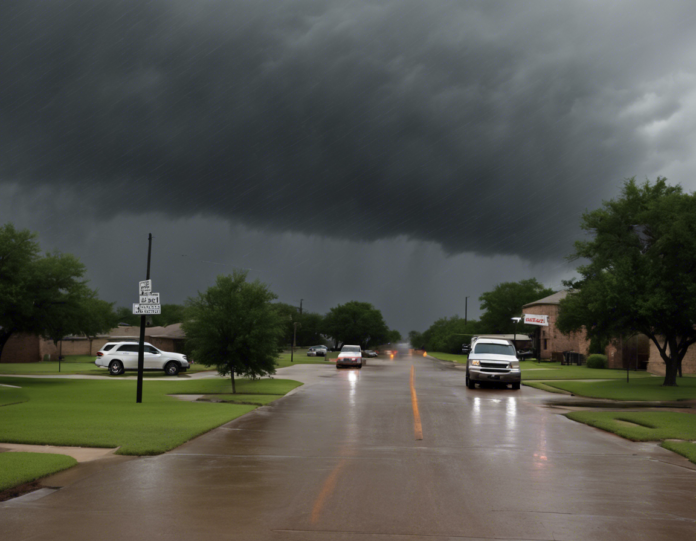When it comes to weathering the unpredictable conditions in Texas, preparation is key. The Lone Star State is no stranger to extreme weather, from scorching heat waves to violent thunderstorms and even the occasional rare snowstorm in certain regions. However, with a few tips and tricks, you can ensure you are better equipped to handle whatever Mother Nature throws your way.
Understanding Texas Weather Patterns
Before diving into specific tips for surviving Texas storms, it’s important to have a basic understanding of the weather patterns in the state. Texas experiences a variety of weather phenomena due to its size and diverse geographical features. Coastal areas are prone to hurricanes and tropical storms, while tornadoes are common in the central region known as “Tornado Alley.” Flash floods can occur across the state, and heatwaves are a concern, especially in the summer months.
Preparing Your Home
One of the first steps in preparing for Texas storms is to fortify your home against potential damage. Here are some key measures you can take:
1. Roof Inspection:
- Ensure your roof is in good condition by inspecting it regularly for any signs of damage.
- Replace missing or damaged shingles to prevent leaks during heavy rain or hailstorms.
2. Clear Gutters and Drains:
- Keep gutters and drains free of debris to prevent water from accumulating on your roof.
- Proper drainage is essential to prevent water damage to your home’s foundation.
3. Reinforce Windows and Doors:
- Install storm shutters or plywood boards to protect windows from flying debris.
- Replace weather stripping and seals around doors to prevent water seepage.
4. Secure Outdoor Furniture:
- During storms with strong winds, outdoor furniture can become projectiles.
- Secure furniture or bring it indoors to prevent damage to both the furniture and your home.
Essential Supplies for Storm Preparedness
In addition to securing your home, it’s essential to have a disaster preparedness kit on hand in case of power outages or evacuation. Here are some essential supplies to include in your kit:
- Non-perishable food and water
- Flashlights and batteries
- First aid kit
- Medications
- Personal hygiene items
- Blankets
- Cash
- Important documents
- Emergency contact list
Having these supplies readily available can make a significant difference in your ability to weather a storm safely.
Staying Informed During Severe Weather
Another crucial aspect of surviving Texas storms is staying informed about weather alerts and forecasts. Here are some resources you can use to stay updated:
- National Weather Service: Provides weather alerts and forecasts for your area.
- Weather Apps: Download a weather app on your smartphone for real-time updates.
- Emergency Alert System: Register for alerts from local authorities to receive critical information during emergencies.
Coping with Power Outages
Power outages are common during severe storms, so it’s essential to be prepared to cope without electricity. Here are some tips for managing power outages:
- Use flashlights instead of candles to prevent fire hazards.
- Unplug electronic devices to protect them from power surges when the electricity comes back on.
- Avoid opening the refrigerator and freezer unnecessarily to keep food from spoiling.
- Stay hydrated and cool during hot weather by seeking shelter in a cool location.
By following these guidelines, you can navigate power outages more effectively until electricity is restored.
Frequently Asked Questions (FAQs)
1. How can I protect my car during a hailstorm?
To protect your car during a hailstorm, consider parking it in a garage or covered parking area. If no shelter is available, use blankets or a car cover to minimize damage from hailstones.
2. What should I do if I encounter a flash flood while driving?
If you encounter a flash flood while driving, turn around and find an alternative route to higher ground. Avoid driving through flooded areas, as the depth of the water may be deceiving and pose a significant risk.
3. How can I prepare my pets for a storm?
Ensure your pets have identification tags with updated contact information in case they get lost during a storm. Pack a supply of food, water, medications, and comfort items for your pets in your disaster preparedness kit.
4. What is the safest place to seek shelter during a tornado?
The safest place to seek shelter during a tornado is in a basement or an interior room on the lowest level of your home, away from windows and exterior walls. If you live in a mobile home, seek alternative shelter in a sturdy building.
5. How can I help my community recover after a severe storm?
After a severe storm, consider volunteering with local disaster relief organizations or donating essential supplies to those in need. Stay informed about recovery efforts in your community and offer support to your neighbors who may have been impacted by the storm.
Surviving Texas storms requires preparedness, vigilance, and a proactive approach to staying safe during extreme weather conditions. By implementing these tips and tricks, you can better navigate the challenges posed by inclement weather and protect yourself and your loved ones from harm.
